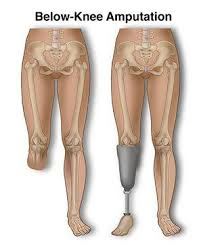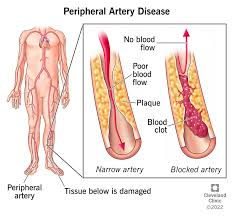Which nursing action(s) should the nurse include in the post-op plan of care for a client recovering from a below-the-knee amputation?
Administering pain medication as needed.
Encouraging the client to bear weight on the affected limb immediately after surgery.
Restricting the client's mobility and keeping the client on bed rest.
Applying a tight compression bandage on the residual limb.
The Correct Answer is A
Choice A reason:
Post-operative pain management is a critical aspect of care for a client recovering from a below-the-knee amputation. Administering pain medication as needed helps to manage pain effectively, which is essential for the client's comfort and recovery. Pain control is also important to facilitate participation in rehabilitation activities.
Choice B reason:
It is not advisable to encourage the client to bear weight on the affected limb immediately after surgery. The residual limb needs time to heal, and premature weight-bearing can lead to complications such as delayed healing or wound dehiscence.
Choice C reason:
While it is important to prevent complications such as deep vein thrombosis, complete restriction of mobility and keeping the client on bed rest is not recommended. Early mobilization, as part of a rehabilitation program, is essential for improving circulation, preventing muscle atrophy, and promoting overall recovery.
Choice D reason:
Applying a tight compression bandage on the residual limb is a common practice in the post-operative care of clients with amputations. The compression bandage helps to control swelling, shape the limb for a prosthesis, and prevent fluid accumulation. However, the bandage must be applied correctly to avoid impairing circulation.

Nursing Test Bank
Naxlex Comprehensive Predictor Exams
Related Questions
Correct Answer is A
Explanation
Choice A reason:
Post-operative pain management is a critical aspect of care for a client recovering from a below-the-knee amputation. Administering pain medication as needed helps to manage pain effectively, which is essential for the client's comfort and recovery. Pain control is also important to facilitate participation in rehabilitation activities.
Choice B reason:
It is not advisable to encourage the client to bear weight on the affected limb immediately after surgery. The residual limb needs time to heal, and premature weight-bearing can lead to complications such as delayed healing or wound dehiscence.
Choice C reason:
While it is important to prevent complications such as deep vein thrombosis, complete restriction of mobility and keeping the client on bed rest is not recommended. Early mobilization, as part of a rehabilitation program, is essential for improving circulation, preventing muscle atrophy, and promoting overall recovery.
Choice D reason:
Applying a tight compression bandage on the residual limb is a common practice in the post-operative care of clients with amputations. The compression bandage helps to control swelling, shape the limb for a prosthesis, and prevent fluid accumulation. However, the bandage must be applied correctly to avoid impairing circulation.

Correct Answer is C
Explanation
Choice A Reason
While hypertension can contribute to the development of PAD, it does not directly cause fats to deposit in the arteries. Hypertension can damage the arterial walls, making them more susceptible to atherosclerosis, but it is not the primary mechanism of PAD development.
Choice B Reason
Excess fats in the diet can contribute to atherosclerosis, which is the accumulation of plaques in the arterial walls. However, the fats do not simply get stored; they combine with other substances, including calcium and inflammatory cells, to form plaques that can restrict blood flow.
Choice C Reason
This statement is the most accurate. PAD is primarily caused by atherosclerosis, which is the buildup of plaques formed by fats, cholesterol, calcium, and other substances in the blood. These plaques can harden and narrow the arteries, leading to reduced blood flow to the extremities. The process can be exacerbated by factors such as smoking, diabetes, and high cholesterol.
Arterial spasms can occur, but they are not the typical cause of chronic PAD. Spasms are more often associated with conditions like Raynaud's phenomenon or can be a response to stress or cold temperatures. PAD is usually a result of progressive atherosclerosis rather than intermittent spasms.

Whether you are a student looking to ace your exams or a practicing nurse seeking to enhance your expertise , our nursing education contents will empower you with the confidence and competence to make a difference in the lives of patients and become a respected leader in the healthcare field.
Visit Naxlex, invest in your future and unlock endless possibilities with our unparalleled nursing education contents today
Report Wrong Answer on the Current Question
Do you disagree with the answer? If yes, what is your expected answer? Explain.
Kindly be descriptive with the issue you are facing.
